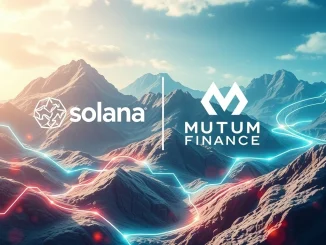
The world of finance is evolving rapidly, and digital assets are at the forefront of this change. For those tracking cryptocurrency news, a significant development out of South Korea recently caught attention. A prominent political figure has voiced a compelling idea that could reshape the nation’s approach to digital currency: the introduction of a Korean won stablecoin. This proposal isn’t just about adopting new tech; it’s framed as a strategic move to protect the national economy.
Why a Korean Won Stablecoin Matters Now
Lee Jae-myung, a key political figure as the presidential candidate from the Democratic Party of Korea (DPK), recently spoke about the potential benefits of integrating digital currencies more deeply into South Korea’s financial system. During a live talk show on May 8 with YouTubers focusing on economic topics, Lee specifically advocated for a market featuring Korean won-based stablecoins. His reasoning, as reported by Money Today, centers on two main points: keeping pace with global trends and preventing capital outflow.
But what exactly are stablecoins, and why would pegging one to the Korean won be beneficial? Stablecoins are cryptocurrencies designed to minimize price volatility, typically by being pegged to a reserve asset like a fiat currency (like the US dollar or, in this case, the Korean won), gold, or other cryptocurrencies. This stability makes them potentially useful for transactions, savings, and as a bridge between traditional finance and the volatile crypto market.
How Could Stablecoins Prevent Capital Outflow?
The idea that stablecoins could help prevent capital outflow might seem counterintuitive at first. Aren’t cryptocurrencies often used to move money across borders? Yes, but the proposal likely envisions a specific type of stablecoin or regulatory framework. Here are a few ways a regulated, won-based stablecoin market could potentially address capital flight concerns:
- Regulated On/Off-Ramps: A formal system for won-based stablecoins would likely involve licensed exchanges and wallets. This could provide regulators with better visibility into flows than unregulated crypto channels.
- Domestic Accessibility: By making it easier and potentially cheaper to use a digital form of the won for domestic and international transactions, businesses and individuals might be less inclined to seek out foreign currencies or less transparent digital assets solely for transaction efficiency.
- Integration with Traditional Finance: A well-designed Korean won stablecoin could integrate seamlessly with existing banking systems, making digital transactions more accessible and potentially reducing reliance on foreign financial infrastructure for international trade or remittances.
- Attracting Foreign Investment: A clear regulatory stance and the availability of a stable digital won could make South Korea a more attractive hub for blockchain and fintech innovation, potentially bringing capital *in* rather than pushing it out.
Lee Jae-myung’s emphasis suggests a recognition that digital assets are becoming a standard part of the global financial landscape. Ignoring this trend could mean South Korea misses out on economic opportunities and potentially sees value flow into jurisdictions with more advanced digital asset frameworks.
The Broader Context: South Korea Crypto Landscape
South Korea already has a vibrant South Korea crypto market, known for its active trading community and strict regulations following past market volatility. Exchanges operate under tight rules, including real-name trading accounts linked to banks. Introducing a won-based stablecoin would be another significant step in integrating digital assets into the mainstream financial system, building upon the existing infrastructure and regulatory experience.
However, implementing such a system isn’t without challenges. Key considerations include:
- Regulatory Framework: Establishing clear rules for issuance, reserves, and redemption of won stablecoins.
- Reserve Management: Ensuring reserves backing the stablecoin are transparent, secure, and sufficient.
- Adoption: Encouraging businesses and consumers to use the stablecoin.
- Competition: How a won stablecoin would interact with or compete against other digital payment systems or potential future central bank digital currencies (CBDCs).
The proposal by Lee Jae-myung highlights a growing global conversation among policymakers about how to harness the benefits of digital currencies while mitigating risks like capital flight, financial stability, and illicit use. His focus on the Korean won stablecoin suggests a specific strategy tailored to South Korea’s economic needs and position in the global market.
What’s Next for South Korea and Stablecoins?
While this is a proposal from a political candidate, it signals the increasing prominence of digital asset discussions at high levels of government in South Korea. The potential benefits, such as increased efficiency in transactions, reduced costs, and better integration with the global digital economy, are clear. The challenge lies in creating a robust, secure, and well-regulated framework that achieves the stated goal of preventing capital outflow while fostering innovation.
The conversation around stablecoins in South Korea is far from over. As politicians like Lee Jae-myung bring these topics to the forefront, the path towards greater digital asset adoption and integration into the national economy becomes clearer, albeit with many regulatory hurdles still to navigate. This is a space worth watching for anyone interested in the future of finance and the intersection of technology and economic policy.
In summary, the call for Korean won-based stablecoins by Lee Jae-myung is a significant development reflecting the growing recognition of digital assets’ role in the global economy. Framed as a measure to enhance South Korea’s competitiveness and prevent capital outflow, this proposal could pave the way for a more integrated and potentially more resilient digital financial infrastructure in the country.



